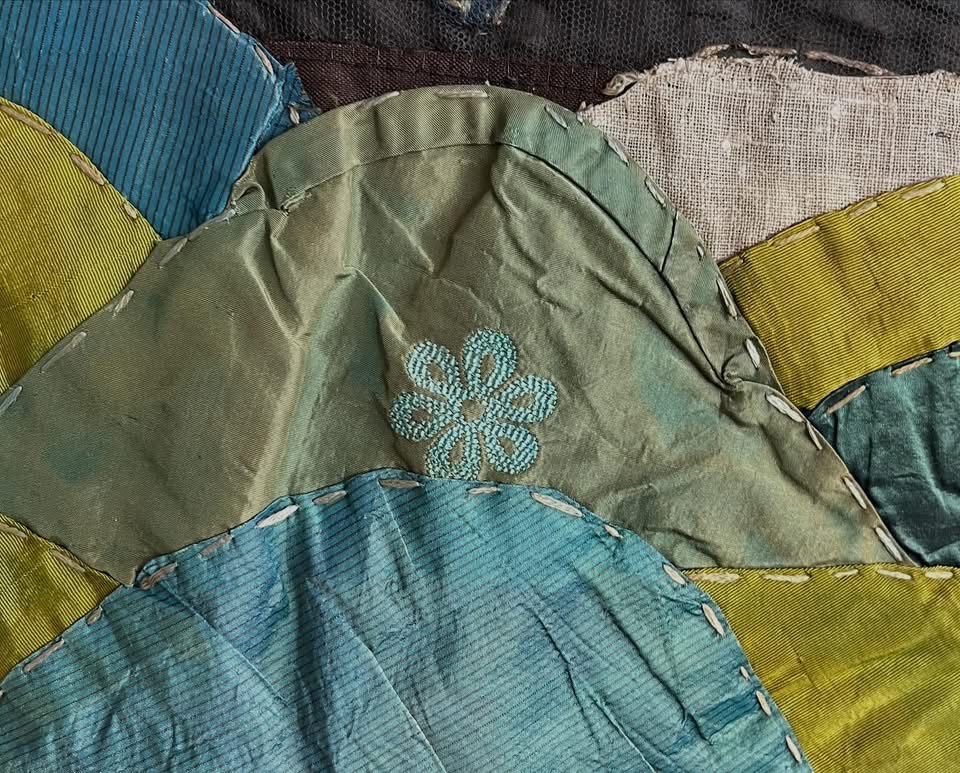Commitment to sustainability
At Zenzie Tinker Textile Conservation we recognise our responsibility to minimise our environmental impact while conserving and preserving historic textiles. We are committed to integrating sustainable practices into our conservation work, ensuring that our activities align with the environmental policies of the Institute of Conservation (ICON) and our accredited heritage clients, including historic houses and national collections.
With the UN Sustainable Development Goal 11.4, countries have pledged to “strengthen efforts to protect and safeguard the world’s cultural and natural heritage”. As textile conservators we understand the role we can play in achieving this goal.
Our Environmental Principles
1. Sustainable Conservation Practices
- Prioritise non-invasive and reversible conservation techniques to extend the life of textiles and reduce the need for resource-intensive interventions.
- Use conservation-grade materials that are ethically sourced, recyclable, or reusable wherever possible.
- Adopt preventive conservation strategies to minimise deterioration and unnecessary treatments.
2. Resource Efficiency
- Reduce energy consumption by utilising energy-efficient lighting, heating, and equipment in our workspace.
- Limit water usage in textile treatments and explore water-efficient methods.
- Minimise waste by reusing and recycling packaging materials, conservation materials, storage supports, and conservation tools.
3. Sustainable Material Sourcing
- Choose environmentally responsible suppliers for conservation materials to meet sustainability and ethical standards.
- Where feasible, source locally produced, low-impact materials to reduce transportation emissions.
4. Reducing Carbon Footprint
- Optimize travel and transport by utilising digital documentation, virtual meetings, and consolidated site visits.
- When travel is necessary, use public transport, car-sharing, or low-emission vehicles where possible.
5. Pollution Prevention & Hazardous Waste Reduction
- Limit the use of harmful chemicals by seeking non-toxic, biodegradable, and solvent-free alternatives where possible.
- Ensure the safe disposal of hazardous materials in accordance with environmental regulations.
6. Collaboration & Advocacy
- Work closely with clients, heritage organisations, and colleagues to promote sustainable conservation practices.
- Share knowledge and encourage environmentally conscious decision-making within the sector.
7. Employee Engagement
As an employer we model an environment-conscious approach within our business. Recycling is both encouraged and supported at our premises. We liaise with Brighton & Hove Council and Recorra Brighton to offer full recycling provision, including food waste.
8. Continuous Improvement
- Review and update our environmental policy in response to emerging sustainable practices, research, and regulations.
- Seek training and development opportunities to enhance our understanding of sustainable textile conservation.
- This policy will be reviewed annually to ensure continued relevance and effectiveness.
Conclusion
We are dedicated to preserving textiles while protecting the environment for future generations. By embedding sustainability into our conservation approach, we aim to contribute to the long-term care of cultural heritage with minimal ecological impact.

